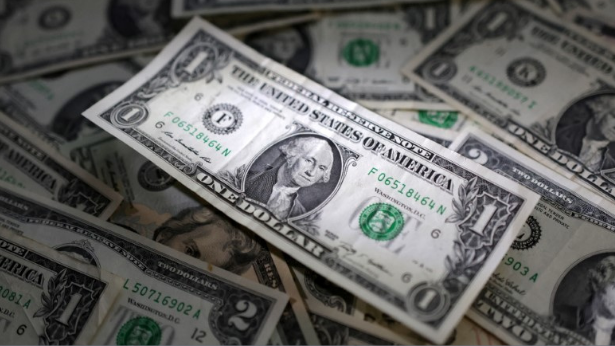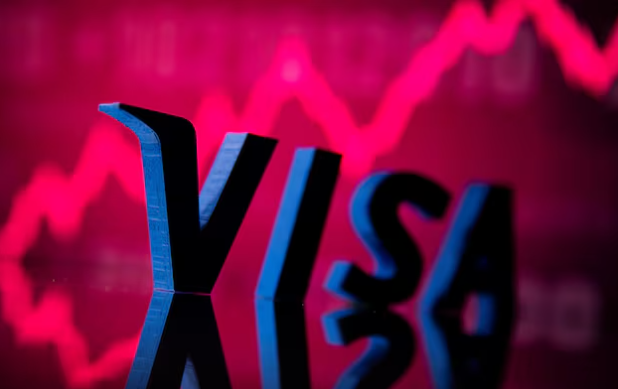
Date Issued – 25th September 2024
Consumer Confidence Plummets to 2-Year Low as Paycheck-to-Paycheck Households Struggle
Consumer confidence has fallen to its lowest point in two years, as the financial strain on paycheck-to-paycheck households continues to grow. The latest reading from The Conference Board shows a sharp decline in the consumer confidence index, dropping to 98.7 this month from 105.6 in August, marking the largest decrease since August 2021. All five components of the index, covering economic outlook, inflation expectations, and job market conditions, saw deterioration. The steepest decline in confidence was seen among consumers aged 35 to 54, especially those earning under $50,000 annually, reflecting growing financial stress in lower-income segments. These consumers have become increasingly pessimistic about their financial prospects, with inflation expectations over the next 12 months rising to 5.2%.
The outlook on spending is mixed. While plans for major purchases such as smartphones or laptops have cooled, there has been a slight improvement in home and car purchasing intentions over the next six months. However, spending on goods is expected to see a slight uptick as consumers adapt to higher prices and interest rate cuts by the Federal Reserve. The jobs market has also dimmed expectations. Fewer consumers expect their incomes to rise, with only 18% anticipating wage increases, down from 18.6% in August. Meanwhile, 13% expect a decrease in their earnings, up from 11.7%. Concerns about job availability are also rising, with 18.3% of respondents expecting fewer jobs in the near future. Dana Peterson, chief economist at The Conference Board, emphasized the growing pessimism: “Consumers’ views of current business conditions have turned negative, and sentiment around the labor market has further softened. Expectations for future business conditions, labor markets, and income have become less positive.”
The expectations index, which tracks the consumer outlook for the next six months, dropped 4.6 points to 81.7, nearing the critical threshold of 80—a level typically associated with the onset of a recession. Should the index fall below 80, it would signal an increased risk of economic downturn. Demographically, confidence remains polarized. The 35-54 age group has emerged as the least confident, while younger consumers, under the age of 35, remain more optimistic. Income disparities are also evident: consumers earning less than $50,000 reported the largest drop in confidence, whereas those earning over $100,000 remain the most confident. Data from PYMNTS Intelligence paints a similarly grim picture. As of last month, 25% of paycheck-to-paycheck consumers were struggling to pay their bills, the highest figure since September 2021. Furthermore, 43% of consumers have altered their financial lifestyles over the past two years, with 27% reporting downward financial mobility. Millennials and lower-income households earning less than $50,000 annually have been hit hardest, with 34% of each group experiencing a decline in financial well-being. As inflation persists and economic uncertainty looms, the paycheck-to-paycheck segment of the population continues to bear the brunt of financial stress. With consumer confidence at a two-year low, the economic outlook for vulnerable households remains bleak.
China’s Economic Recovery Faces Hurdles Beyond Interest Rate Cuts
China’s economic slowdown requires more than just interest rate cuts to regain momentum, according to analysts. While the People’s Bank of China’s (PBOC) recent rate cuts, including reductions on existing mortgages, provided a short-term boost to the stock market, experts argue that a broader fiscal stimulus is necessary to address the root of China’s economic woes. The decision by the PBOC comes amid China’s longest deflationary streak since 1999, driven by weak domestic demand. Larry Hu, Chief China Economist at Macquarie, highlighted the need for fiscal spending on housing, supported by the PBOC’s balance sheet, to stimulate growth. “More fiscal support is required, especially in the housing market,” Hu remarked, noting that interest rate cuts alone may not be sufficient.
The bond market reflected skepticism about the sustainability of this recovery. Following the rate cut announcement, the yield on China’s 10-year government bonds briefly fell to a historic low of 2%, signaling cautious optimism but still lagging behind the U.S. 10-year Treasury yield at 3.74%. Edmund Goh, Head of China Fixed Income at abrdn, expressed the need for “major fiscal policy support” to push bond yields higher, anticipating that Beijing will need to step up stimulus efforts given the weak economic backdrop. The gap between U.S. and Chinese bond yields has widened significantly since April 2022, when the Federal Reserve began its aggressive rate hikes. This divergence is reflective of contrasting growth prospects between the world’s two largest economies. While U.S. yields have surged on the back of stronger economic performance, China’s yields have remained low, as growth prospects falter.
In the first half of 2024, China’s economy grew by 5%, but concerns are mounting that full-year growth could fall short of the government’s target. Industrial activity has decelerated, and retail sales have increased by just over 2% year-on-year in recent months, further amplifying the need for additional stimulus measures. China’s Ministry of Finance has so far adopted a conservative approach to fiscal stimulus. Despite an increase in the fiscal deficit to 3.8% in October 2023, the ministry reverted to a more modest target of 3% in March. According to CF40, a leading Chinese think tank, there remains a 1 trillion yuan shortfall in spending, which may force Beijing to increase the deficit and issue additional treasury bonds to fill the revenue gap. PBOC Governor Pan Gongsheng attributed the downward trend in bond yields partially to a slower pace of government bond issuance. He also cautioned against the risks of one-sided bets on rising bond prices. Analysts like Haizhong Chang, Executive Director at Fitch (China) Bohua Credit Ratings, agree that fiscal stimulus is essential for achieving meaningful economic growth, noting that high levels of corporate and household debt have diminished the effectiveness of monetary easing alone.
The U.S. Federal Reserve’s recent rate cuts have, however, provided some breathing room for Chinese policymakers. A more dovish U.S. monetary policy weakens the dollar, offering support to Chinese exports, one of the few remaining bright spots in the country’s economy. China’s offshore yuan hit its strongest level against the U.S. dollar in over a year following the PBOC’s announcement, underscoring the benefits of a weaker dollar. Nevertheless, analysts remain cautious. Louis Kuijs, APAC Chief Economist at S&P Global Ratings, pointed out that despite lower U.S. interest rates, China still needs more aggressive fiscal action. “Fiscal expenditure lags behind the 2024 budget allocation, bond issuance has been slow, and there are no clear signs of substantial fiscal stimulus plans,” Kuijs observed. As China grapples with sluggish growth, structural challenges such as high debt levels and weak domestic demand continue to weigh heavily on its recovery. While recent rate cuts offer some relief, the consensus remains that significant fiscal intervention will be needed to kickstart sustained growth in the world’s second-largest economy.

U.S. Accuses Visa of Monopolizing Debit Card Swipes, Driving Shares Down
Visa Inc. (NYSE: V), one of the largest global payment networks, faced a significant setback on Tuesday when the U.S. Department of Justice (DOJ) filed an antitrust lawsuit accusing the company of stifling competition in the debit card market. The lawsuit claims Visa has leveraged its dominance by imposing high fees on merchants and paying off potential rivals, contributing to rising consumer costs. Visa shares dropped approximately 5.5% following the news. The DOJ’s suit alleges Visa processes over 60% of U.S. debit transactions, generating around $7 billion annually in fees. Prosecutors claim the company uses its agreements with merchants, card issuers, and competitors to maintain its market dominance, suppressing competition. Visa General Counsel Julie Rottenberg defended the company, stating, “Competition is thriving in the debit market,” and vowed to contest the claims, emphasizing Visa’s value in providing security, reliability, and world-class fraud protection.
The lawsuit comes as part of the Biden administration’s broader effort to curb consumer prices, a critical issue in the lead-up to the 2024 U.S. presidential election. Attorney General Merrick Garland underscored the gravity of Visa’s actions, stating, “Visa’s unlawful conduct affects not just the price of one thing, but the price of nearly everything,” as merchants and banks often pass payment network costs to consumers. The allegations against Visa date back to 2012, following regulatory reforms that opened the debit card market to competition from unaffiliated networks. Prosecutors allege Visa entered into lucrative agreements with emerging financial technology competitors, including Apple (NASDAQ: AAPL), PayPal (NASDAQ: PYPL), and Block Inc.’s Square, preventing them from launching products that could undermine Visa’s dominance. While PayPal declined to comment, Apple and Block did not respond to requests for comment. In addition to the agreements, Visa is accused of imposing “staggering financial penalties” on merchants who fail to route the majority of eligible transactions through its network. The DOJ is seeking a court order to block Visa from maintaining pricing structures that discourage competition and from paying rivals not to compete. Prosecutors hope these measures will restore a fair competitive environment for processing debit payments, both online and in physical stores.
The lawsuit is not Visa’s first brush with antitrust scrutiny. The DOJ began investigating Visa’s debit card practices in 2021, the same year it blocked the company’s planned acquisition of financial technology firm Plaid. Mastercard (NYSE: MA), Visa’s primary rival, also disclosed earlier this year that it is under investigation by the DOJ for similar concerns. Visa and Mastercard have faced legal battles over their market dominance for nearly two decades. In 2019, both companies agreed to pay U.S. merchants $5.6 billion to settle a class action lawsuit over anticompetitive practices. More recently, a federal judge in Brooklyn rejected a parallel settlement in June that aimed to reduce swipe fees by $30 billion over five years. This settlement would have also required Visa and Mastercard to ease restrictions preventing merchants from charging customers for card use. Visa has set aside around $1.6 billion for potential settlements related to these and other U.S. cases involving interchange fees. As the legal battles continue, this latest DOJ lawsuit could have far-reaching implications for Visa’s business model and the broader payments landscape.
Volkswagen’s Labour Clash Highlights Broader Challenges in Europe’s Auto Industry
Volkswagen (ETR: VOWG_p) is facing significant challenges as tensions with labour unions over cost-cutting measures at underutilized factories have raised broader concerns about the company’s long-term strategy. The situation is prompting discussions about the underlying causes of Volkswagen’s troubles, including inefficient governance, poor EV investments, and economic struggles in key markets like China and Germany. Yet, Volkswagen’s issues are not unique; other major European automakers like Renault and Stellantis face similar challenges with underused factories, particularly in higher-cost markets like Germany and France. Across Europe, factory utilization rates for carmakers have dropped sharply since 2019, with utilization in higher-cost Western countries falling to just 54%, well below the profitability threshold of 70%. In contrast, plants in lower-cost countries like the Czech Republic and Turkey have maintained higher capacity utilization, averaging around 79%. This discrepancy highlights a growing east-west divide in Europe’s auto industry, with automakers increasingly shifting production to lower-cost regions.
Volkswagen’s Dilemma: EVs and High-Cost Production
Volkswagen’s decision to produce electric vehicles (EVs) in Germany, driven by political and union pressure to secure jobs, has been a double-edged sword. The company’s expensive German plants now produce high-cost EVs, which are not selling as well as expected. As a result, underutilized factories like VW’s Osnabrueck plant, which operates at just 30% capacity, are in danger of closure. Volkswagen CFO Arno Antlitz acknowledged that high costs in German plants are a challenge for the company, particularly as it tries to compete with cheaper rivals from China, where labour costs are as low as $3 per hour. Germany, by contrast, has the highest auto worker wages in the world, averaging €59 ($66) per hour.
Adding to Volkswagen’s woes, EV sales in Europe have slumped, with German EV sales plummeting by 69% in August. Union leaders argue that Volkswagen needs to produce more affordable EVs to stimulate demand, noting that the company’s cheapest EV, the ID.3, starts at over €36,000, while competitors like Stellantis offer less expensive options.
Labour Tensions and Political Blowback
Volkswagen is under pressure to cut costs further, with negotiations set to begin with unions on September 25. The automaker has already scrapped a long-standing job security agreement in Germany, allowing potential layoffs from mid-2025 unless a new deal is reached. However, with labour representatives holding half the votes on Volkswagen’s supervisory board, forcing plant closures could lead to significant political and union opposition.
The broader issue of overcapacity has been a persistent problem for Europe’s carmakers, compounded by high labour costs and strong union contracts that make plant closures politically difficult. As demand weakens due to high interest rates and increased competition from Chinese automakers, Volkswagen and other automakers are being forced to consider drastic measures to remain competitive.
The Shift to Lower-Cost Markets
Many automakers are already shifting production to lower-cost markets. Stellantis, for example, has moved some EV production to Poland through a joint venture with China’s Leapmotor and has significantly reduced capacity at its Turin plant in Italy. Renault and Ford have also made significant job cuts in Europe, while ramping up production in cheaper regions like Spain. As Chinese automakers such as BYD and Chery expand into Europe, setting up factories in countries like Hungary and Turkey, the pressure on Western automakers to reduce costs will likely intensify. Industry experts predict that the east-west divide in Europe’s auto industry will continue to grow, with countries like Germany focusing more on premium and luxury cars to offset higher operational costs. Volkswagen’s future depends on finding a balance between reducing costs, appeasing labour unions, and producing affordable EVs that can compete in a rapidly evolving global market. With major decisions looming, the outcome of the upcoming negotiations could have far-reaching implications for both the company and the European auto industry as a whole.
Caroline Ellison Receives Two-Year Sentence for Role in FTX Crypto Fraud
In a landmark case, Caroline Ellison, the former head of cryptocurrency hedge fund Alameda Research, was sentenced to two years in prison for her involvement in one of the largest financial frauds in U.S. history. Ellison, 29, played a pivotal role in the theft of $8 billion in customer funds from the now-defunct FTX exchange, founded by her ex-boyfriend, Sam Bankman-Fried. Despite her extensive cooperation with prosecutors, U.S. District Judge Lewis Kaplan emphasized the seriousness of the crime, stating that remorse and cooperation could not serve as a “get out of jail free card.” Bankman-Fried, once hailed as a rising star in the cryptocurrency world, is serving a 25-year sentence following his conviction last year. Ellison’s sentence could have been much harsher, as she faced seven felony counts of fraud and conspiracy, which carried a potential maximum sentence of 110 years. However, her cooperation with authorities, which included over 20 meetings with prosecutors and crucial testimony against Bankman-Fried, led to a more lenient outcome.
Ellison, who ran Alameda from 2021 to 2022, expressed deep remorse for her actions during the sentencing. “Not a day goes by when I don’t think about all the people I hurt,” she told the court, adding that she often contemplated leaving Alameda but struggled to act against Bankman-Fried’s influence. Judge Kaplan acknowledged her critical role in the fraud but also recognized her cooperation as a “fundamental distinction” from Bankman-Fried. “There’s no way you’re ever going to do something like this again,” he said, before noting the unprecedented scale of the financial fraud. Ellison will begin serving her sentence in November and may be eligible for release earlier for good behavior. Two other former FTX executives, Nishad Singh and Gary Wang, are also awaiting sentencing for their roles in the scheme. Ellison’s sentencing sends a powerful message about the gravity of financial crimes and the importance of full cooperation with authorities in such cases. The downfall of FTX has left a lasting impact on the cryptocurrency sector, reminding investors and regulators of the risks inherent in this volatile market.
Find below some of our Buy/Sell Recommendations. Balfour Capital Group is a distinguished global boutique investment management firm with $400 million AUM and over 1000 Clients.

Disclaimer: This post provides financial insights for informational purposes only. It does not constitute financial advice or recommendations for investment decisions.

